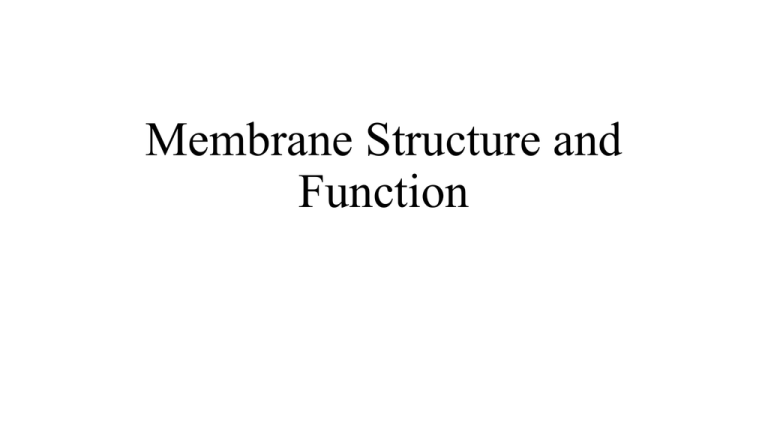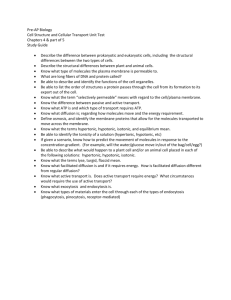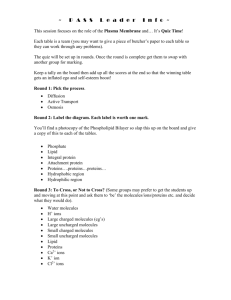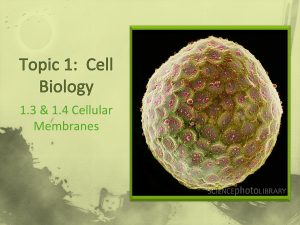Membrane Structure and Function - Answers
advertisement

Membrane Structure and Function Model 1 – Simple Diffusion 1) Two types of molecules 2) Triangles – 14 on left Cirlces – 12 on left, 13 on right 3) Triangle is larger 4) The molecules will move in all directions (that’s diffusion) 5) The dots can fit through the gaps because they are small and they are equally distributed on both sides 6) No change from this point since the triangles are too big to fit through the membrane and the dots are already spread out evenly Model 2 – The Selectively Permeable Cell Membrane 7) Phospholipids and Proteins 8) Four - 2 types of surface proteins and 2 membrane-spanning proteins 9) Surface protein is either on the inside or outside whereas the membrane-spanning proteins reach across the whole membrane 10) Glycoprotein 11) Glycolipid 12) Small polar and nonpolar molecules 13) Between phospholipids 14) More small molecules are outside compared to the inside so we say … the concentration is higher outside 15) No, molecules are moving in as shown by the arrows because it started with more outside. Concentration Gradients (high to low = downhill) 1) Dots in Model 1, small molecules in Model 2 2) A) Diffusion is the net movement of molecules from an area of HIGH to LOW concentration. B) The molecules continue to move along the concentration gradient until reaching equilibrium. C) Molecules continue to move randomly. Model 3 – Facilitated Diffusion 18) Membrane spanning protein 19) Gated channel 20) Hormones 21) Hormone attaches and works like a “key” to open the gate. 22) The protein channel acts like a gate with the hormone as the key 23) Facilitated means the molecules get “help” to move across the membrane, but they still move from high to low concentration 24) The nonpolar phospholipid tails provide a barrier that prevents the Na+ and K+ from crossing the membrane unless through a channel. Model 4 – Active Transport 25) Membrane spanning proteins 26) Diamond 27) ATP and ion binding sites 28) Low to High concentration 29) No, the substance is being moved up a concentration gradient 30) Energy (ATP) is used to change the shape of the protein channel 31) ATP changes to ADP 32) Active transport moves molecules up concentration gradients whereas passive transport moves molecules down concentration gradients Complete the Summary Chart - #33 Active Transport Definition - #34 • Movement of a substance up it’s concentration gradient, using energy input (ATP) from the cell and requiring membrane protein channels. Extension Questions 35) Active Transport 36) Diffusion 37) Facilitated diffusion relies on proteins … the # of protein channels will set a limit as to how fast diffusion can happen 38) Active transport does not rely on concentration gradient. It relies on a supply of energy.





